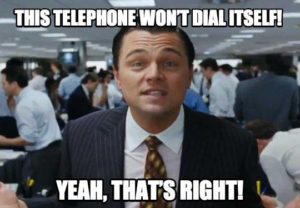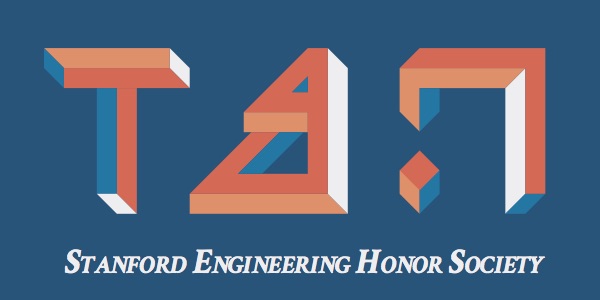Mention the word “sales” and countless engineers frown, scoff or shrivel.
And it is not their fault. Sales triggers many images in our minds, many of which are not positive — think the sleazy used car salesman, or the sleek guy in a suit trying to sell your parents a timeshare holiday home. Yet, your idea is worthless unless you are able to convince others of its value — in other words, sell the idea.
So, how do you sell your idea?
The plethora of books on sales do not seem to be addressed to the digital-savvy consumer of today, who has the capability to compare and do their homework even before the sales process begins. Ask the top sales professionals for help and they offer well-meaning but generic advice like “build long-lasting relationships with customers”. We don’t even have the relationships to begin with!
So today, we’re here to give some tactical tools you can apply immediately, regardless of the idea or product you’re selling.

The APPCOM Framework
A sales framework is just a skeleton for a conversation you have that involves persuasion — this could be to a customer, an investor or a partner.
Why the need for a framework? A framework allows you to methodically uncover the needs and concerns of any audience, and offer the corresponding benefits to address these concerns.
The framework I like is APPCOM.
Approval – Obtain approval and gain liking in order to build support
Purpose – Set the context for the meeting
Probing – Understand the concerns of your audience and uncover the real, painful needs
Consulting – Match the features of your product to the needs of the audience, emphasizing on the benefits as a result
Overcoming Objections – Address concerns that your audience has
Motivating to Close – Gaining agreement for them to take the next steps forward
Approval
Questions your audience is asking: Do you know what you are talking about? Can I trust you? Do you have my best interest at heart?
Approval is a critical first step to a successful persuasion. You need to establish likability by your target audience in order for them to be receptive to you. Simple methods such as keeping a professional appearance and doing homework on your audience before speaking to them are effective. For example, did your audience recently win an award or accomplish a significant milestone? Be sure to mention it early!
Purpose
Questions the audience is asking: What am I here for? Why did you ask me for this conversation?
Next, establish the purpose of the conversation, so the audience is clear on your intentions. For most sales processes, the first meeting is rarely the meeting to close the sale. You can consider stating purposes such as “At the end of the meeting, I’d like to ask you if you see a potential fit working together”, and this helps to establish the direction of the meeting.
Probing
Once your purpose of the meeting is established by you, it’s time for your audience to do more talking. You should not launch into your product’s features or benefits — after all, you do not know what challenges and problems your audience is facing! Questions, questions, questions. Ask plenty of questions on the concerns and problems they are facing.
When your audience states their problems, treat it with respect and care. Confirm and restate what you heard “It sounds like you are facing XXX challenges” or “If I understand you correctly, you are saying that you spend XXX time doing XXX”. This shows that you genuinely care, and affirms your understanding of your audience’s problems
Consulting
Questions the audience is asking: How can you help me solve my challenges?
Now that you know what problems your audience face, you are allowed to introduce your product’s features and benefits. Match the appropriate feature to the problem you heard earlier, and be sure to explain the benefit after your product is adopted. For example, a productivity app’s features might be a to-do list that addresses a clinic’s problem of pharmaceutical task management — emphasize the benefit “Our to-do list feature will save you 30% – 40% of administrative time, allowing your staff to focus on patient engagement”.
Overcoming Objections
Questions the audience is asking: I have concerns with regard to your solution.
Objections are common after you present your product. Hearing these objections are not only valuable feedback for your product, but also opportunities for you to address them. Remember that objections are not rejections! That your audience bothers to voice out their concerns is a positive sign that they are interested in adopting your product, and are considering the implications.
To deal with objections, use the Feel-Felt-Found method. Re-state and affirm what your audience feels (“I know you’re unsure about adopting this product”) so you demonstrate awareness of how your audience feels, then assure them that previous clients have felt in a similar way (“Previous clinics also were cautious about adopting our app”), and what these clients found after using your solution (“But these clinics found that they were able to achieve 30% productivity improvements 2 months after our solutions”). This allows your audience to be heard and assured, without dismissing their genuine concerns.
Motivating to Close
Questions the audience is asking: Ok, this sounds good. What next?
The final part of the conversation is most critical, where you should not forget to close and make your clear ask. Do not assume that a good conversation results in a close. Make the ask clear and tangible, and attach a timeline with it. For example, “Great! I will send you the quotation and could you let me know by end of the week if it is acceptable to you?” or “Would you be interested to share this with your CEO?”.
Once you make the ask, remain silent. Do not answer your question. Wait until your audience responds positively, thank them, and end the conversation. At this stage, while you may be excited about your successful close, do not start a new conversation. Affirm their commitment, wrap up the conversation and celebrate your victory!

Blogger:
Qin En Looi
Why did you choose to be an engineer?
Engineering trains me to think logically and exhaustively, providing a structured approach to solve problems. I tend to be very disorganized, so engineering helps me break down complex problems to components, prioritize and address those components step-by-step.
Hometown:
Singapore
Class year:
2020
Field:
Management Science & Engineering
Blogger bio:
Qin En published 13 research papers in human-computer interaction before 20, built a startup in Southeast Asia that raised US$3M, and is on Forbes 30 Under 30.

